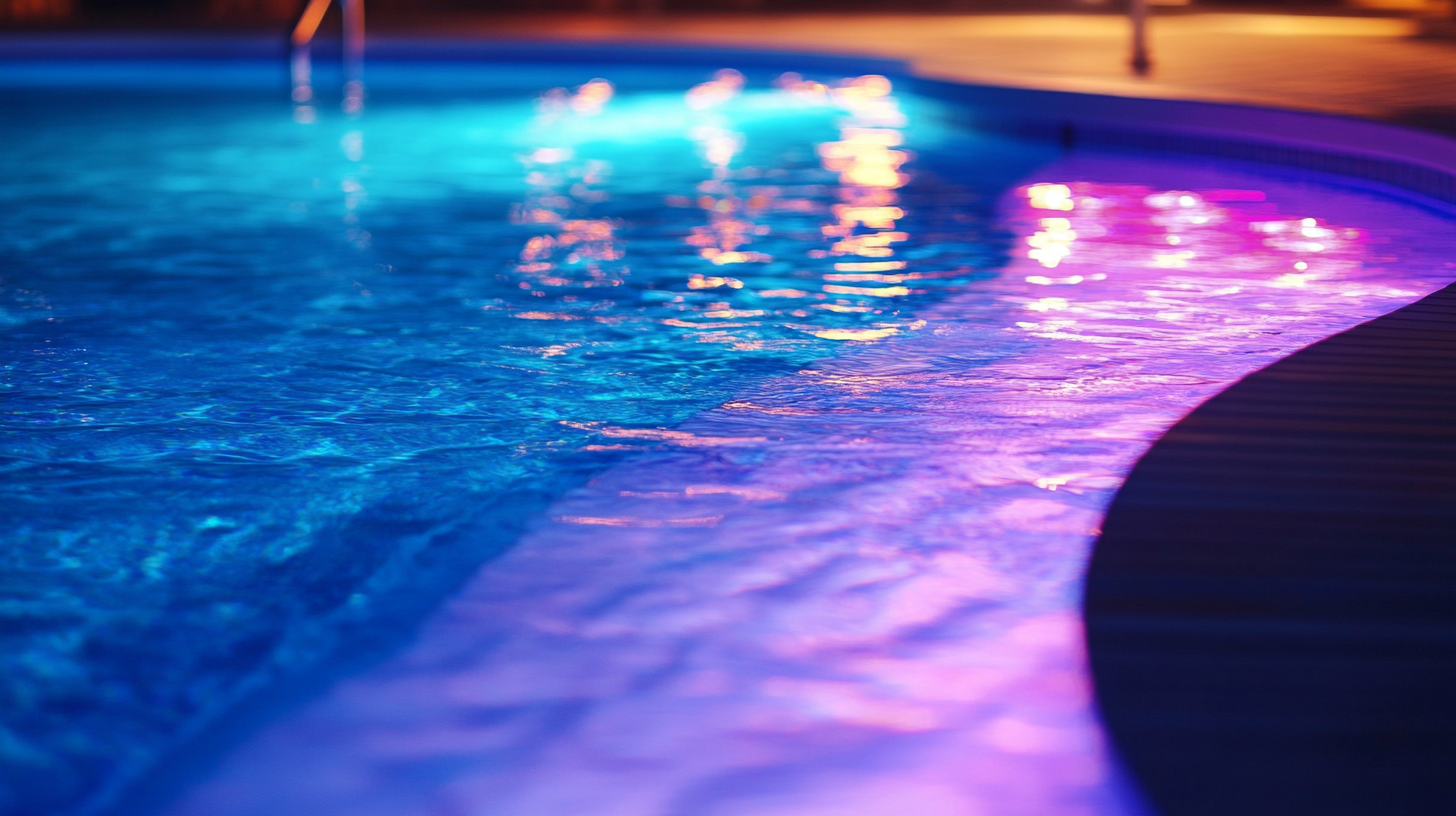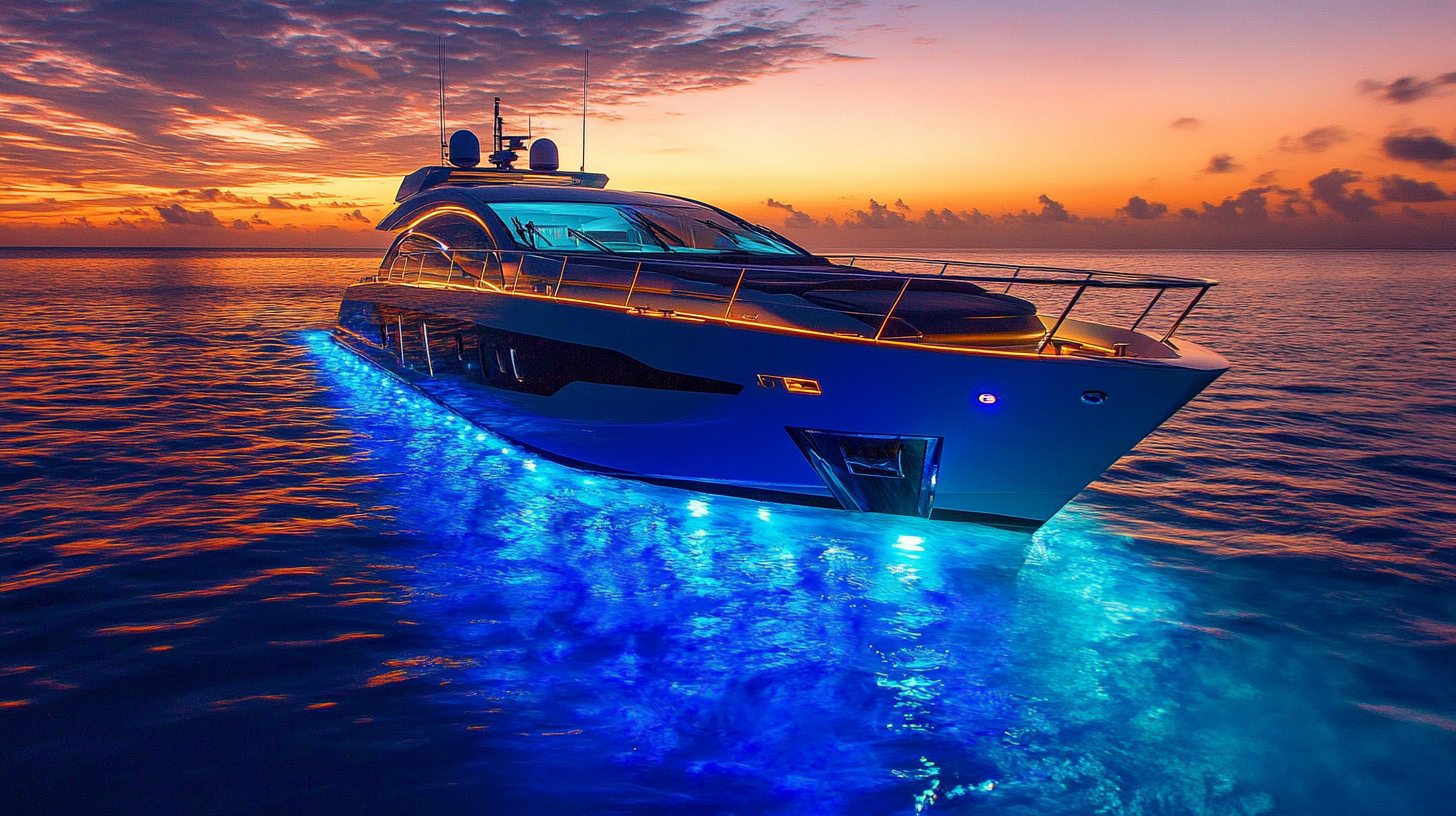Choosing energy-saving underwater pool lights
When it comes to choosing the right pool lights, several factors can significantly impact not only your pool’s aesthetic appeal but also its energy efficiency and long-term maintenance. The type of pool lights you select should marry both functionality and style, ensuring that your pool area becomes an inviting space while keeping operational costs low.
First, consider the brightness of the pool lights. Different lighting options produce varying levels of illumination, from soft, ambient glows to vibrant, dazzling lights that can turn your pool into a mesmerizing centerpiece. LEDs are a popular choice nowadays, as they provide bright, clear light while being energy-efficient.
The color options available are another vital factor. Modern LED pool lights come in a spectrum of colors and even allow you to change hues with remote control or smartphone apps. This flexibility can set the mood for any occasion, whether it’s a tranquil evening swim or a lively poolside party.
Durability and waterproofing are crucial too. Since these lights will be submerged underwater, they must be designed and built to withstand prolonged exposure to water and chlorine. Look for lights with high IP ratings, indicating superior resistance to water and dust ingress.
Ease of installation is another key consideration. Some lights are designed for DIY enthusiasts and come with straightforward installation instructions, while others might require professional installation. Weigh your options carefully to avoid any unnecessary complications or additional costs.
Lastly, don’t overlook the importance of compatibility with your existing pool system. Make sure the lights you choose can be integrated smoothly without requiring major modifications to your pool’s structure. This can save a lot of headaches and ensure that you’re swimming in a beautifully lit pool in no time.
By thoughtfully considering these factors, you’ll be better equipped to pick the perfect energy-saving pool lights that offer both functional benefits and aesthetic pleasure. Happy swimming!
Types of energy-saving underwater lights
When it comes to energy-saving underwater pool lights, the choices are far from limited. Let’s dive into the various types available and uncover which might be the best fit for your pool. This way, you can make an informed decision that’s both energy-efficient and visually captivating.
First on the list are LED pool lights. These have become the gold standard for energy-saving pool lighting for several compelling reasons. LEDs use a fraction of the energy compared to traditional incandescent bulbs. They are also known for their longevity, often outlasting their incandescent and halogen counterparts by several years. Another added bonus is their versatility; LED lights come in various colors and can even feature programmable lighting sequences to create an ambiance that suits any occasion, from a serene evening swim to a vibrant pool party.
Next up, we have fiber optic pool lights. While they may not be as energy-efficient as LEDs, they offer a unique lighting solution by placing the bulbs outside of the pool. Light is then transmitted through fiber optic cables into the pool, which makes maintenance a breeze since you won’t need to actually get in the water to replace a bulb. However, it’s important to note that fiber optic systems are generally more expensive upfront and don’t quite offer the same brightness level as LED lights.
Another interesting option is the solar-powered pool lights. If sustainability is high on your list of priorities, solar lights are worth considering. These lights harness energy directly from the sun, leading to zero electricity costs. They usually have a rechargeable battery that stores solar energy during the day and illuminates your pool at night. While they are highly energy-saving, their performance heavily depends on the amount of sunlight they receive, which might not be ideal for all locations.
Then there’s the option of halogen pool lights. Though not as energy-efficient as LEDs, halogen lights have been around for a while and are known for their bright and clear light output. They are often cheaper initially but consume more electricity over time, which could offset the lower upfront cost. Additionally, they have a shorter lifespan compared to LEDs, meaning you’ll be replacing them more frequently.
Lastly, consider the innovative induction pool lights. These lights utilize electromagnetic fields to generate light, making them highly efficient and long-lasting. They produce a consistent and uniform light output and are especially useful for larger pools requiring substantial illumination. However, they are comparatively new in the market and tend to be on the pricier side.
Choosing the right type of energy-saving pool lights involves evaluating your specific needs, budget, and pool characteristics. Whether you prefer the enduring efficiency of LEDs, the eco-friendliness of solar lights, or the practical maintenance of fiber optics, there’s an energy-saving solution out there to suit your pool perfectly. Keep these options in mind as you explore the best ways to illuminate your swimming paradise while saving on energy costs.
Installation and maintenance tips
When you’re ready to install your chosen energy-saving pool lights, make sure you have a well-thought-out plan to ensure a hassle-free installation process. One of the first things you’ll want to check is the compatibility of the lights with your existing pool setup. Verify that the lights you selected fit seamlessly with the existing wiring and fixture standards. For DIY enthusiasts, it’s paramount to follow the manufacturer’s instructions closely. Proper adherence to guidelines not only ensures efficiency but also ensures your safety.
In many cases, hiring a professional for the installation can be a wise decision. Qualified electricians have the experience and tools to install pool lights correctly, minimizing the risk of faulty wiring or waterproofing issues. Plus, a professionally installed light system often comes with a service warranty, saving you future headaches. If budget constraints require a DIY approach, consider consulting online tutorials or seeking advice from local pool supply stores.
Once your lights are installed, proper maintenance is crucial to keep them working efficiently and prolong their lifespan. Regularly check the lights for any signs of wear and tear, especially the seals and waterproofing elements. Water ingress can significantly damage the electrical components of pool lights, leading to costly repairs or replacements. Additionally, keep the surface of the lights clean, as algae and mineral deposits can accumulate over time, dimming the light output.
If you’re using LED or fiber optic lights, occasional checks of the control units and electrical connections can prevent minor issues from ballooning into major problems. For solar-powered lights, ensure that the solar panels are clean and positioned to receive maximum sunlight. This will optimize their charging efficiency and ensure your pool is illuminated through the night.
Another maintenance tip involves seasonal checks. Before closing your pool for the winter or any extended period of time, inspect your lights and fix any issues. Conversely, take the opportunity to perform a thorough check when reopening your pool for the swim season. This proactive approach can catch potential problems early, saving you both time and money.
Replacing bulbs or components when necessary is another part of upkeep. If you notice a significant drop in illumination or complete failure of some lights, timely replacement can prevent further complications. Always use compatible bulbs or parts as specified by the manufacturer to maintain energy efficiency and ensure optimal performance. For LED systems, consider upgrading to newer models periodically, as advancements in LED technology continue to offer greater efficiency and better color options.
Lastly, don’t forget about the legalities and safety regulations surrounding electrical installations near water. Make sure your installation complies with local building codes and electrical standards. Safety should always be a top priority, so utilizing ground fault circuit interrupters (GFCIs) can add an extra layer of protection to your pool lighting system.
By giving due attention to installation and maintenance, you can prolong the life of your energy-saving pool lights and keep your pool looking stunning night after night. Proper installation and regular upkeep not only ensure safety but also enhance the overall experience, making every swim an enchanting adventure under the glow of beautifully lit waters.
Cost analysis and budget considerations
Cost is a significant factor when choosing energy-saving underwater pool lights. Initial expenses can vary widely depending on the type and brand of lights you select. Here’s a breakdown to help you get an understanding of what to expect.
| Type of Pool Light | Initial Cost Range | Energy Consumption (Watts) | Average Lifespan (Hours) |
|---|---|---|---|
| LED Pool Lights | $100 – $700 | 10 – 30 | 30,000 – 50,000 |
| Fiber Optic Pool Lights | $400 – $1,200 | 50 – 150 | 6,000 – 10,000 |
| Solar-Powered Pool Lights | $20 – $150 | 0 (solar) | 2,000 – 3,000 |
| Halogen Pool Lights | $50 – $300 | 100 – 300 | 2,000 – 5,000 |
| Induction Pool Lights | $200 – $800 | 50 – 100 | 15,000 – 20,000 |
While the initial purchase price is a major consideration, it’s equally important to think about long-term costs, which include both energy consumption and maintenance. For example, though LED pool lights might have a higher upfront cost compared to halogen lights, their lower energy use and longer lifespan can result in significant savings over time.
To provide a clearer picture, let’s compare the annual operating costs of different lighting options. Assuming an average usage of 8 hours per day and an electricity rate of $0.12 per kWh:
| Type of Pool Light | Annual Energy Cost |
|---|---|
| LED Pool Lights (20W) | $7.00 |
| Fiber Optic Pool Lights (100W) | $35.00 |
| Solar-Powered Pool Lights | $0.00 |
| Halogen Pool Lights (200W) | $70.00 |
| Induction Pool Lights (80W) | $28.00 |
As you can see, solar-powered pool lights practically eliminate electrical costs, but their performance is highly dependent on sunlight availability, which could be a limitation in overcast or less sunny regions. LED lights offer a balance between initial cost and ongoing energy efficiency, making them a popular choice for many pool owners.
Maintenance costs also play a role in the whole cost analysis. LED and induction pool lights have longer lifespans, meaning fewer replacements and lower maintenance costs, while halogen and fiber optic lights require more frequent bulb changes. This factor not only drives up costs but also includes the potential expense of hiring professionals for more complex replacements or maintenance tasks.
Considering these points, your budget for pool lights should not only account for the initial cost but also the long-term savings and potential additional expenses. By choosing the right energy-saving pool lights, you can enjoy both beautiful illumination and financial efficiency. For those who prioritize sustainability, incorporating cost-effective, eco-friendly solutions will promise an appealing return on investment over time.
Environmental impact and sustainability
When it comes to choosing energy-saving underwater pool lights, the environmental impact and sustainability of your options are crucial factors to consider. Prioritizing efficient lighting solutions not only benefits your wallet but also reduces your carbon footprint, contributing to global efforts in minimizing energy consumption and environmental degradation.
First and foremost, LED pool lights are deemed the most environmentally friendly option available. These lights consume significantly less energy compared to their incandescent and halogen counterparts, which translates to fewer greenhouse gas emissions from power plants. LED lights are also mercury-free, eliminating the risk of contaminating water sources with toxic substances. Moreover, their prolonged lifespan reduces waste as fewer units need to be manufactured and disposed of over time. By choosing LED lights, pool owners can make a substantial positive impact on the environment while enjoying well-lit swimming spaces.
Another eco-conscious option is solar-powered pool lights, which harness the renewable energy of the sun to illuminate your pool. With zero electricity usage, these lights are the epitome of sustainability. They charge during the day and automatically light up at night, offering a dependable and green alternative. However, their efficiency can be influenced by geographic location, as areas with limited sunlight may experience lower performance. Despite this limitation, solar lights remain an excellent choice for sustainability-focused individuals.
Although fiber optic pool lights are not the most energy-efficient in comparison to LEDs and solar lights, they offer a unique advantage regarding environmental impact. The use of light fibers placed outside the pool can simplify maintenance and reduce the likelihood of electrical issues caused by water ingress. This setup minimizes the need for replacements and repairs, indirectly reducing material and energy consumption. While the upfront cost can be higher, the ease of maintenance and potential environmental benefits are worthy considerations.
When evaluating the environmental impact of pool lights, it’s essential to look beyond energy consumption. The production process and the materials used also play a role in overall sustainability. Manufacturers increasingly focus on producing energy-saving pool lights with recyclable materials and eco-friendly production methods. Opting for brands committed to sustainable practices can amplify your positive impact on the environment.
Finally, consider the broader implications of reduced energy usage. Lowering electricity demand decreases the strain on power grids and reduces the reliance on fossil fuels. This shift amplifies the benefits of an energy-saving lighting solution beyond individual use, contributing to a collective effort toward a more sustainable future. As pool owners, we hold the power to make choices that align with eco-friendly principles, promoting a healthier planet for future generations.
Choosing energy-saving underwater pool lights goes hand in hand with supporting sustainable living practices. By opting for LEDs, solar-powered options, and considering the overall environmental impact, you can revel in a sparkling, eco-conscious pool while contributing to a greener world. Embrace the benefits of advanced lighting technologies and let your pool illuminate not just your backyard but also a path toward a sustainable future.


